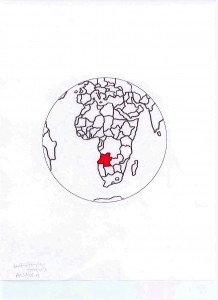ANGOLA
A. THE COUNTRY
The Republic of Angola is a large coastal state in south-central Africa
together with the oil-rich coastal enclave, Cabinda, north of the Congo
River. Forty years of almost constant war have devastated Angola and
since the conflict ended, most of the displaced millions have returned
home. Reconciliation movements are growing, and rebuilding the country
is an achievable goal, given it has some of the world’s richest natural
resources. Untapped potential includes huge oil reserves, diamonds,
minerals and good agricultural land. Parliamentary elections, which
determined the President, were held in 2008. Separatist agitation
persists in the enclave of Cabinda.
B. THE PEOPLE
The population is ~18,993,000 and official language Portuguese. All
population figures are estimates as there has been no census since 1973.
~97.6% are Bantu, ~0.06% Khoisan, ~1.8% Other (Mixed race, Westerners).
90% of war casualties were civilians. One in 350 Angolans is a victim
of landmines; 70-90% of the population live in poverty. In 2006, the
mortality rate for children under age five was 26%, and 45% of that same
group suffered chronic malnutrition. A large proportion of the rural
population fled to urban areas due to food shortages and lack security.
The government is accused of failing to care for these refugees.
C. RELIGIONS AND CHRISTIANITY/PENTECOSTALISM
There is religious freedom, but government is attempting to control the
growth of new indigenous groups. ~94.09% claim to be Christian, ~4%
Ethnoreligionist, ~1.1% Muslim, ~0.8% Non-religious, ~0.01% Baha’i.
In the Christian category:
~64.24% are Catholic, ~26.55% Protestant, ~3.1% Unaffiliated, ~2.73%
Independent, ~0.63% Anglican.
Evangelicals represent ~22.5% of the population.
Charismatics represent ~25.3% and of those 12.4% are Pentecostals.
Donna Siemens
References:
http://en.wikipedia.org
Operation World, Jason Mandryk. Colorado Springs: Biblica Publishing, 2010.

